And often misunderstood feature on routers is the ability to grab a remote WiFi signal and use it as a source of internet. For some, it is overlooked completely as they rely on cellular or satellite, while others use it in ways that will impact performance. It can also be used for other creative means, and deserves some discussion.
WiFi as a source
WiFi was one of the first ways boaters could be online prior to cellular being usable and affordable. It's always been a bit of a mess - many companies produced boosters and various products that worked in different ways, but lacked a lot of features, and were quite expensive back in the day. Some of you may remember the Ubiquiti Bullet and other products based off of that platform which was very popular, and finicky to use.
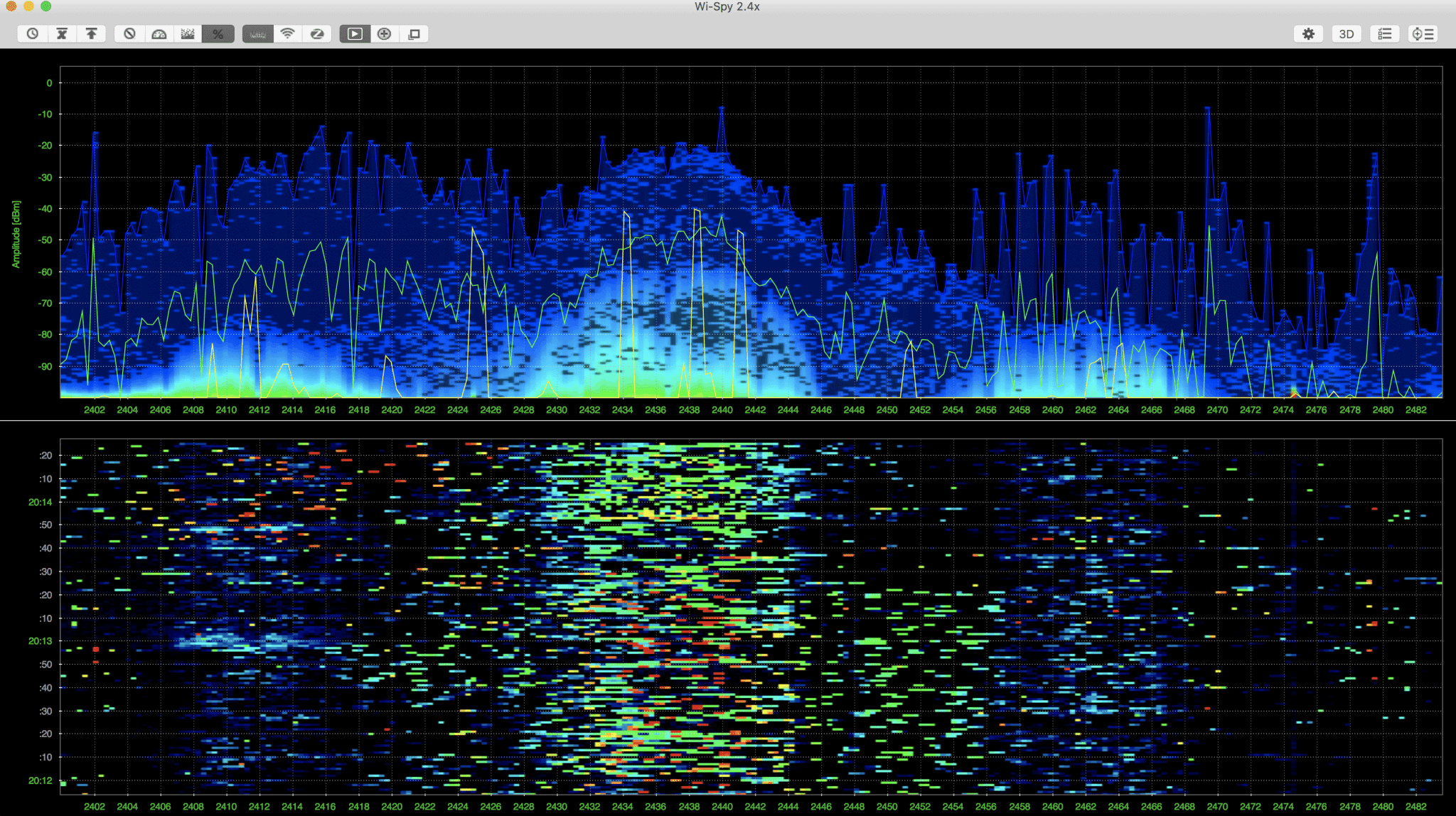
Part of the challenge is how hard it is to provide reliable WiFi in a marina environment. 6 years ago I wrote about the challenges, and they are still relevant today.
What has changed is that WiFi equipment has become easier to deploy, cheaper, and more people are educated about how to use it while in a marina setting. How useful it will be depends on your equipment and quality of installation, as well as the marina or location you're in. I use WiFi any place I happen to be able to get a stable signal as a backup, or even as a primary source if it is paired with another connectivity method in a redundant fashion.
Let's delve a little deeper into the various options to take advantage of WiFi from a boat.
Dedicated WiFi device
There are dedicated devices that you can use to grab a remote WiFi signal, but most need additional hardware, such as a router, to produce a full solution. For many years, the MikroTik Groove has been a popular solution, and I've written about it often.
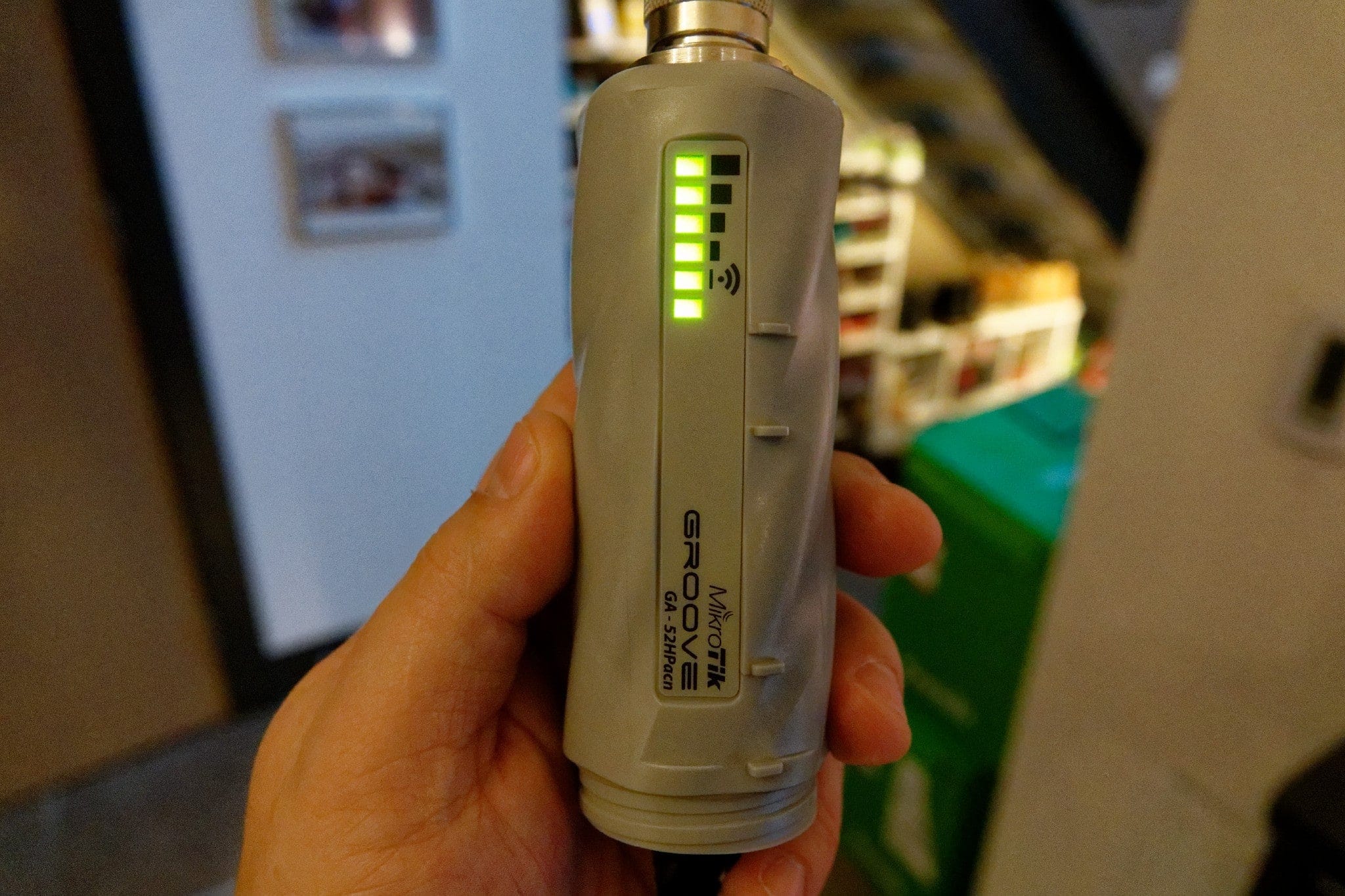
There are/were also products made by Rogue WiFi, UniFi/Ubiquity and others that are similar in shape and design - and outdoor unit with an antenna that looked like a "bullet". For many years, this was one of the most popular ways of connecting and I have installed many of these units for boaters and answered even more questions about setup and configuration.
The limit of these devices is the features, utility, and the cost. The harder to use ones like the MikroTik are around $100, while others can run $500+ which is near a full fledged mobile router. They're also focused on doing just one thing - grabbing remote WiFi. Very few have the ability to broadcast it back into your boat - you'll need another device to do that, which adds to the cost and complexity.
Many of the original vendors in this space are either out of business or retired or changed their products. The most popular one, from Ubiquity (now UniFi) is actually still produced, but the software has dramatically changed and only works when connecting to another product from UniFi, making it unusable for our purposes.
Some vendors still sell products in this space, but they are quite expensive, to the point where it might make more sense to look at mainstream vendors like Peplink and Cradlepoint. Many offer them bundled with other devices that will re-broadcast the WiFi signal in your boat, and even add cellular connectivity. I've tested many of these solutions, and the primary benefit is ease-of-use, but their support models and longevity should be a key concern given the cost.
For folks who want a simple setup, these solutions still offer a cheaper way to get internet than a full fledged router, and usually have very easy to use interfaces.
WiFi as WAN
This is a feature that Peplink provides in most of their products. Other vendors have similar functionality but use a different name, although it varies greatly depending on the product. As an example, the Teltonika RUTX11 router, which uses OpenWRT as a base operating system, will allow you to connect to a remote WiFi network as a WAN source, but in most cases, that means that particular radio is not available to broadcast a local WiFi network without additional configuration and performance losses.
Diving deeper into Peplink's WiFi as WAN, the basic feature allows you to scan for remote WiFi networks and have the router connect to it. It can then be used as a source of internet just like a cellular, physical, or satellite connection.

It's pretty easy to use - find the WiFi as WAN item on your dashboard, and move it into an active priority. Once it finishes initializing, you can click on the little WiFi icon on the right (this is Pepwave's firmware version 8.3.0, so it might look slightly different to you).
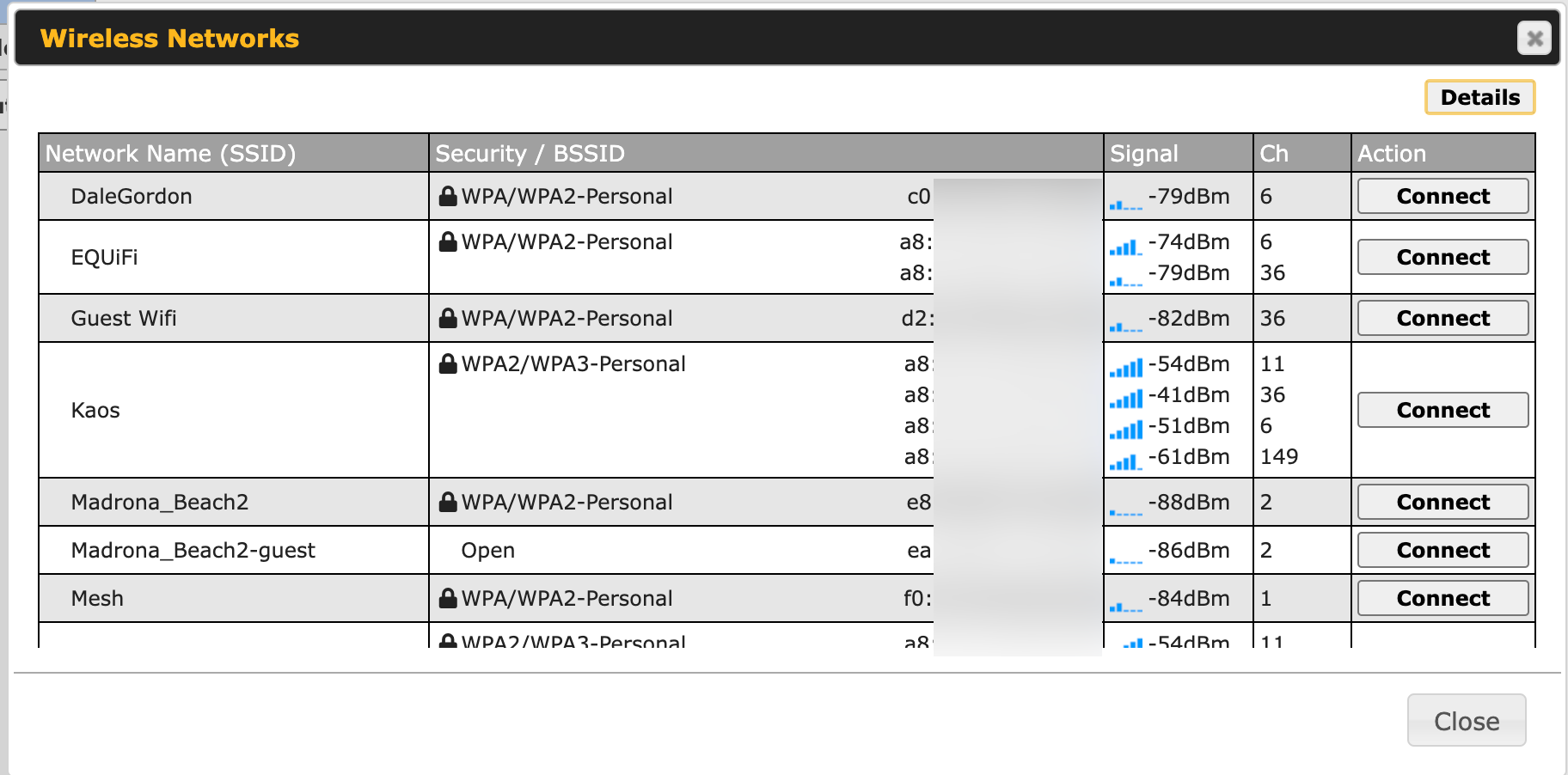
You'll get a list of WiFi networks, signal strengths, security information, and more.
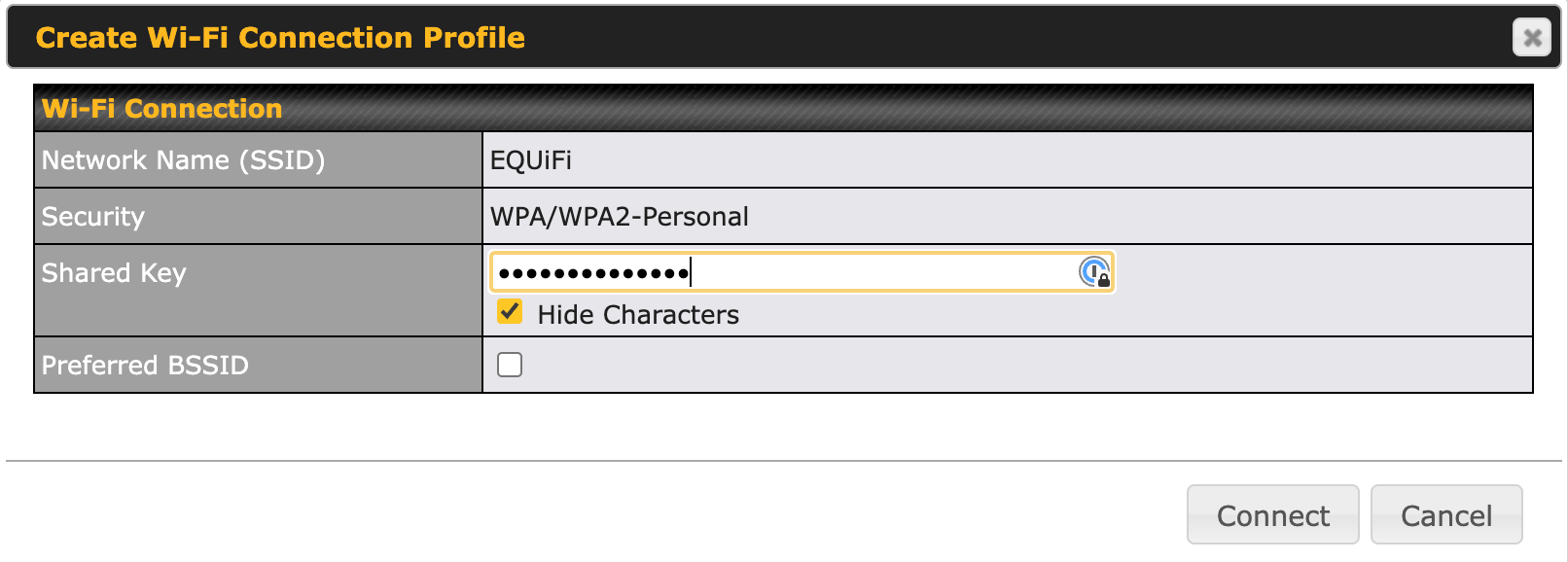
You can click on Connect, provide a password, and also pick a "Preferred BSSID" which allows you to lock your connection to a particular channel/radio/device, which I don't recommend unless you have a particular performance reason to do so.
Once you've completed this, the router will connect to the network and do whatever health checks are setup before enabling the connection.
Some Peplink routers will only show one WiFi as WAN connection available, while others show one for 2.4Ghz and one for 5Ghz. This is somewhat inconsistent across the Peplink product line and firmware version. I prefer seeing them with two, and usually choose models that have that for my installations so that I have more flexibility in tuning it. Since 2.4Ghz tends to travel farther more reliably, being able to pick that is a benefit for reliability versus having it switch back and forth between the bands.
The other benefit of having both 2.4Ghz and 5Ghz WiFi as WAN is that you actually have two separate internet connections, one for each band, which adds redundancy and bandwidth.

Some bigger routers like the MBX line have many radios and will allow you to configure them in three different modes:
- WAN In this mode, all radios operate as Wi-Fi WAN. No local Wi-Fi network will be created.
- WAN + AP In this mode, some radios will will operate as Wi-Fi WAN. Some other radios will be used for your local WiFi network (access point).
- AP In this mode, all radios will be used for local WiFi.
With these larger routers, they usually have 4x Wifi antennas and two sets of radios - 2x for 2.4Ghz, and 2x for 5Ghz. This particular option allows you to tailor the installation to bigger boats and setups. In many cases, I've recommended that the router be setup in WAN only mode where it never generates a local WiFi network, and instead uses the onboard radios to grab a remote WiFi signal. That makes the router completely dedicated to the internet sources, and not dealing with generating WiFi. Then you can use the AP One series access points throughout the boat, and managed by the router, to provide local WiFi. It also is the highest performing setup for WiFi as WAN, if you have the hardware and correct antennas.
WiFi as WAN Limitations
There are a few limitations with WiFi as WAN all around performance, and this includes most other vendors implementations as well.
Using factory antennas on the router to try to grab a remote WiFi signal is not going to get a great result in most cases. In many installs, locating the router in an outdoor location, flybridge, or other places with less interference will provide a good result with the factory antennas, but the best solution is a dedicated outdoor WiFi antenna.
Just like with all other antenna installs, make sure you don't exceed a 20' overall antenna cable length nor use lots of joints or adapters - every one of those reduces the overall performance significantly.
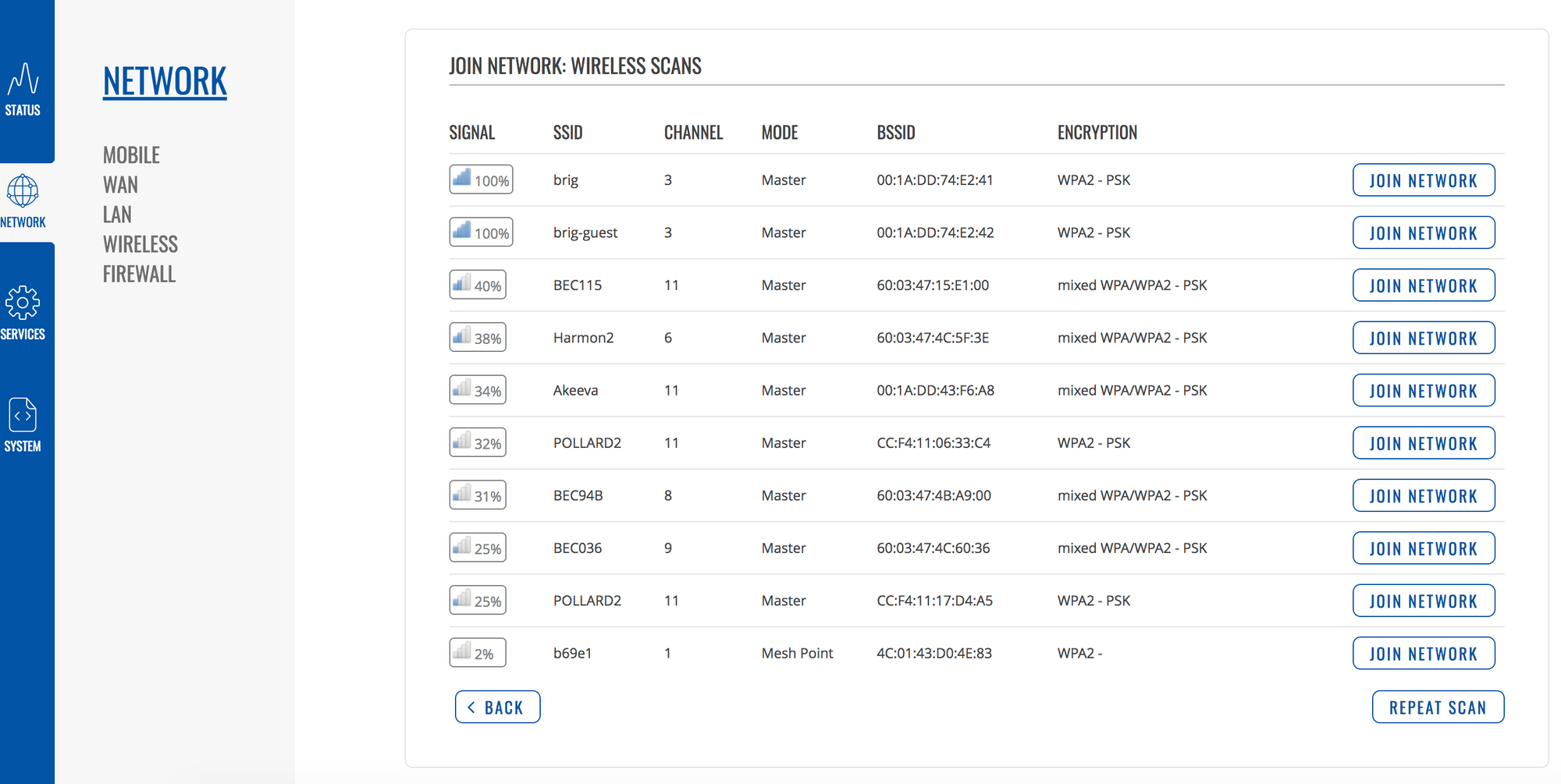
The other big performance limitation is with routers that only have one set of radios. If you're generating your own local WiFi network, which most of us do, and you are also using WiFi as WAN, you will cut performance of both significantly. In many cases, it will reduce overall throughput by at least 50%, if not more, and can affect signal strength and reliability depending on what is going on.
This is because the router is using the radio(s) to do both things simultaneously, which is less than optimal.
This is why even on smaller installations with a MAX Transit or similar product, I recommend using the main router to grab/create internet only. That means it uses the cellular radio, the WAN port to connect to a Starlink dish, and the WiFi radios inside the router to grab remote WiFi signals. Then you pair it with an indoor Peplink Access Point that generates your local WiFi signal and place that nearer to where people congregate. The main router can manage the access point and you focus each part of the hardware on doing the best possible work for the purpose.
This division of labor means that each piece is doing a job that is best suited for it, and gives you the best performance both from your local WiFi network, but also in getting a remote internet connection.
Starlink & WiFi as WAN
There are two reasons folks should consider using WiFi as WAN with Starlink. The first has to do with simplifying your setup. I see many folks with a Peplink/other solution WiFi network, and a separate Starlink network. They switch between them depending on whether they want to use cellular or Starlink - what a pain! You could buy the Starlink ethernet adapter and plug it directly into your router, but sometimes that is not the best choice (see below) or maybe you just don't want to spend the extra money, or perhaps you're using the WAN/internet port on your router for something else.
An even more compelling reason to use it instead of the ethernet adapter has to do with specific models of Peplink routers that perform terribly when plugged in via ethernet. Check this forum post for more details - one of the workarounds is to use WiFi as WAN.
Hotspots, Phones, Testing
Another reason to use WiFi as WAN is if you have a hotspot or MiFi device that you want to use with your existing router / WiFi network. It's an easy way to add an additional internet source.
Plenty of folks have also used it to tether to their phone via WiFi, or even just for testing by pointing it at another device or WiFi network. I use it all the time when testing new routers.
Summary
Remote WiFi is still a viable internet source for many folks, even with Starlink. I use it in places where known good networks exist at marinas and other docks that I visit, and it saves cellular bandwidth usage, and can fill in when Starlink gets slow. If you have higher end routers, check to see if they support features like this, and design your setup to take full advantage of it, which might include a dedicated access point and antennas.


